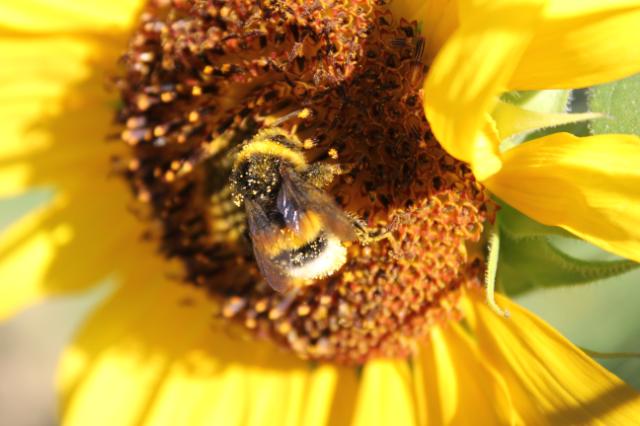The European Parliament saved the Nature Restoration Law (and with it a major piece of the Green Deal)
 The European Parliament, reunited in Strasbourg for the last plenary session before the summer break, voted with 336 votes in favor, 300 votes against, and 13 abstentions to adopt its position on the Nature restoration law. Although the issue with this law has become very political, causing trouble within the Eurochamber majority, it also has economic and financial implications, being a core pillar of the Green Deal.
The European Parliament, reunited in Strasbourg for the last plenary session before the summer break, voted with 336 votes in favor, 300 votes against, and 13 abstentions to adopt its position on the Nature restoration law. Although the issue with this law has become very political, causing trouble within the Eurochamber majority, it also has economic and financial implications, being a core pillar of the Green Deal.
More than a decision on restoring nature, this law appeared as an endorsement of the Green Deal
Last months, the nature restoration law has become the symbol of a political clash in the traditional majority that supported the Ursula von der Leyen-led Commission and the anticipation of how the majority might change at the next elections in June 2024. The Parliament was split down the middle on the proposal, and it is evident from the narrow but significant margin by which the measure passed despite the political tension of recent weeks.
As expected, the European People's Party (EPP), von der Leyen’s political group at the Parliament, voted by a majority against the text, standing by their words of opposition, even if this law was presented by the Commission as one of the core pillars of the Green Deal, the executive’s ambitious plan to put the EU on the path to a green transition, with the ultimate goal of achieving climate neutrality by 2050.
Let’s see briefly what the discussed law foresees.
What is the Nature restoration law
The proposal for a Nature Restoration Law has been presented as a key step in avoiding ecosystem collapse and preventing the worst impacts of climate change and biodiversity loss. Restoring EU wetlands, rivers, forests, grasslands, marine ecosystems, urban environments and the species they host “is a crucial and cost-effective investment”.
First proposed in June 2022, the law envisages a target of restoring ecosystems in 20% of the EU's land and marine areas by 2030 and eventually extend these to all ecosystems in need of restoration by 2050.
But also other targets like:
- Agricultural ecosystems – increasing the grassland butterflies and farmland birds, the stock of organic carbon in cropland mineral soils, and the share of agricultural land with high-diversity landscape features; restoring 30% of drained peatlands under agricultural use by 2030; and 70% by 2050;
- Pollinating insects – reversing the decline of bees, butterflies, bumblebees, hoverflies and other pollinator populations by 2030, and enabling pollinator populations to start increasing again, with a methodology for regular monitoring of pollinators;
- Urban ecosystems – no net loss of green urban space by 2030; a 3% increase in the total area covered by green urban space by 2040; and a 5% increase by 2050; a minimum of 10 % urban tree canopy cover; and a net gain of urban green space that is integrated into existing and new buildings and infrastructure developments;
- Maritime ecosystems and river connectivity - restoring marine habitats and identifying and removing barriers that prevent the connectivity of surface waters, so that at least 25 000 km of rivers are restored to a free-flowing state by 2030.
How the EU will fund the restoration
The economic cost of the degradation of nature is remarkably high. The cost of EU soil degradation, for example, now exceeds 50 billion euros per year, data say. The Commission has estimated that every euro spent on restoration delivers a return on investment between 8 and 38 euros depending on the ecosystem in benefits from the many services healthy ecosystems provide.
The EU Biodiversity Strategy foresees that more than 20 billion euros will be unlocked for biodiversity every year as part of the European Green Deal. Specifically, under the EU Multiannual Financial Framework (MFF) for 2021-2027 the biodiversity financing target adopted will see 7.5% of the EU budget dedicated to biodiversity from 2024, rising to 10% for 2026 and 2027. Under the current MFF, around 100 billion euros will be available for biodiversity spending, including restoration.
The Commission is also working to ensure that funding for nature restoration and biodiversity is fully integrated into the Recovery and Resilience Facility, InvestEU, the European Structural and Investment Funds, the Common Agricultural Policy, the European Maritime, Fisheries and Aquaculture Fund, research funds and the LIFE Programme for environment and climate.
How the law affects the European Green Deal
As we just saw, the Nature Restoration Law and the European Green Deal are interrelated, with both initiatives aligned towards achieving environmental sustainability. The Law is in fact one of the pieces of the much larger 1000 billion euros plan presented in 2019 and it doesn't only involve the use of well over a third of EU funds, but also involves efforts to obtain benefits in the future.
With this vote, at stake was not only an EU regulation, but the entire architecture of the Green Deal and with it the financing package that is involved.